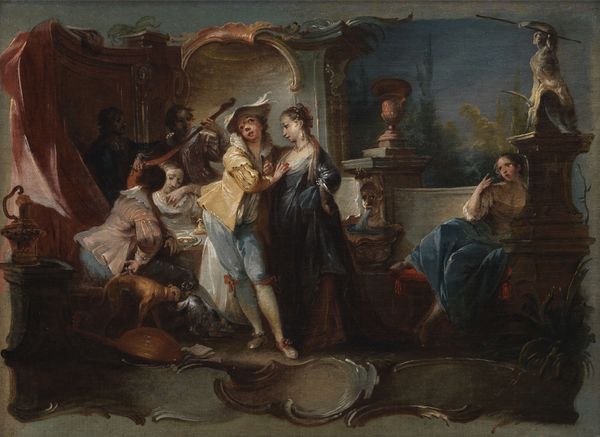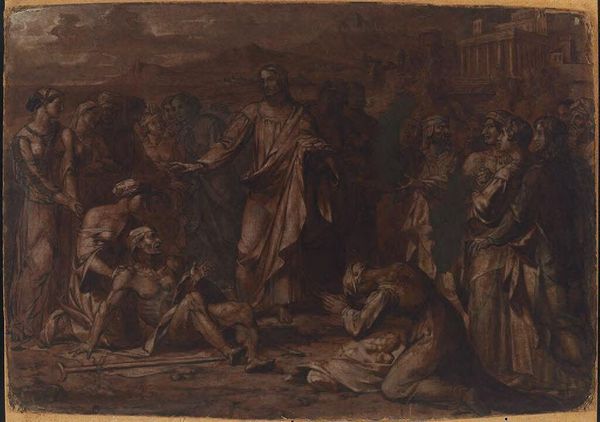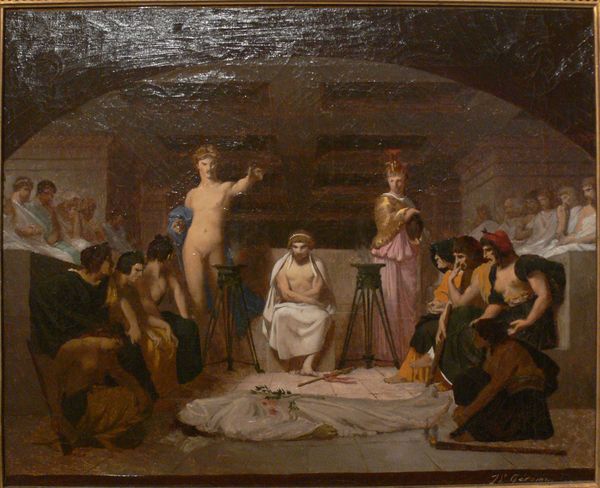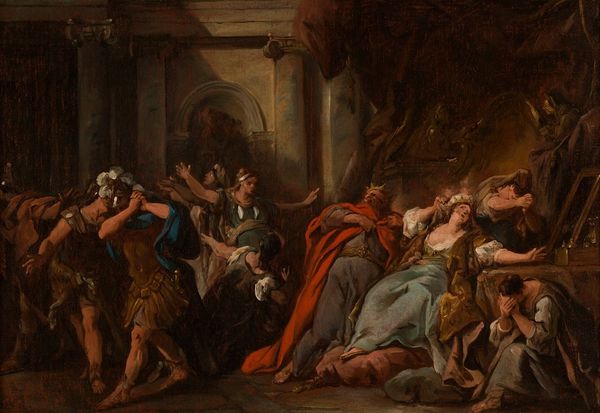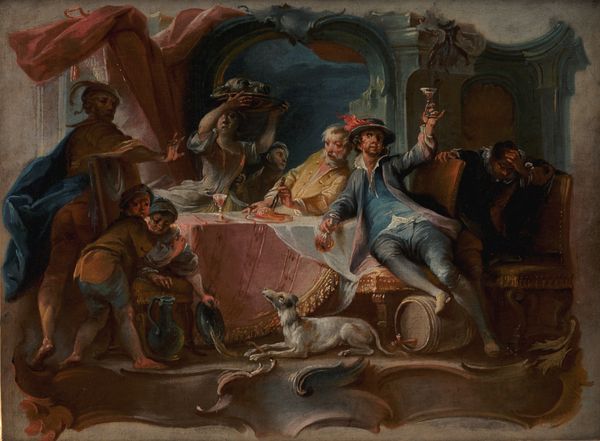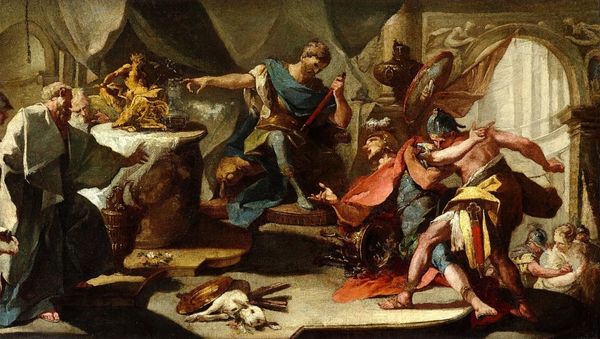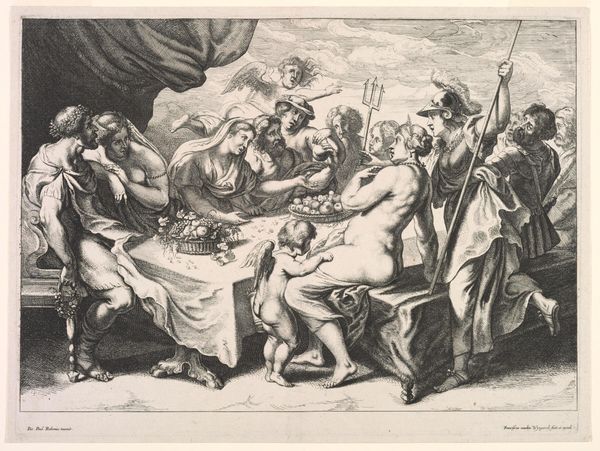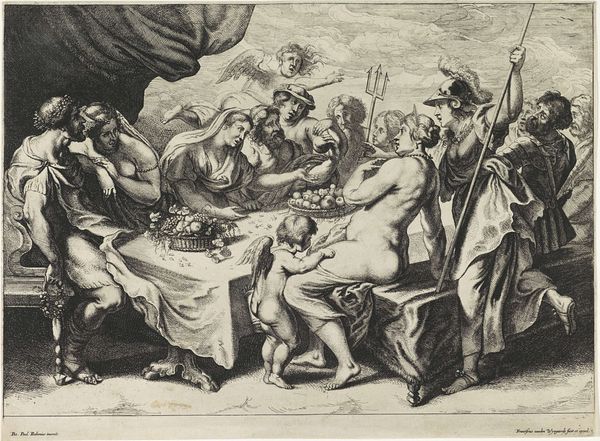
painting, oil-paint
#
neoclacissism
#
narrative-art
#
painting
#
oil-paint
#
figuration
#
oil painting
#
history-painting
#
academic-art
Copyright: Public domain
Editor: We’re looking at “Manio Curio Dentato Rejects the Gifts of the Samnites” by Vincenzo Camuccini. It's an oil painting, and there's a kind of raw intensity to the scene. What strikes you most about this work? Curator: Well, consider the oil paint itself. Look at the labor embedded in its production—the mining of pigments, the processing, the transport. It signifies resources and control, doesn’t it? Now think about how that materiality shapes the story. Editor: I see your point. The rich colors do add to the drama of the scene, especially how the gold and fine fabrics emphasize the supposed riches the Samnites are offering. Curator: Exactly. It's not just a rejection of luxury; it's a challenge to the whole system of value, isn't it? The act of refusal is rendered visually striking *because* of the contrast the materials create. This academic style celebrates self-denial, but whose labor created the piece itself? Editor: That's interesting. So, it's also speaking to this internal contradiction within academic art? It's depicting rejection of excess while existing as a material object of a certain kind of excess, in time and labor if not material? Curator: Precisely. Think of the social context in which it was made, the patronage systems. The painting is a commodity produced within those relations. Its meaning shifts when we consider its life as a circulating object of capital. How does the painting's creation and distribution change the significance of its subject matter? Editor: This makes me consider how artworks, even those seemingly about morality, are very much tied to the world of materials and production. I guess the 'pure' morality they depict never exists outside those relations. Curator: And understanding those ties can really deepen how we interpret their purpose and lasting effect.
Comments
No comments
Be the first to comment and join the conversation on the ultimate creative platform.

